Interactive Timeline
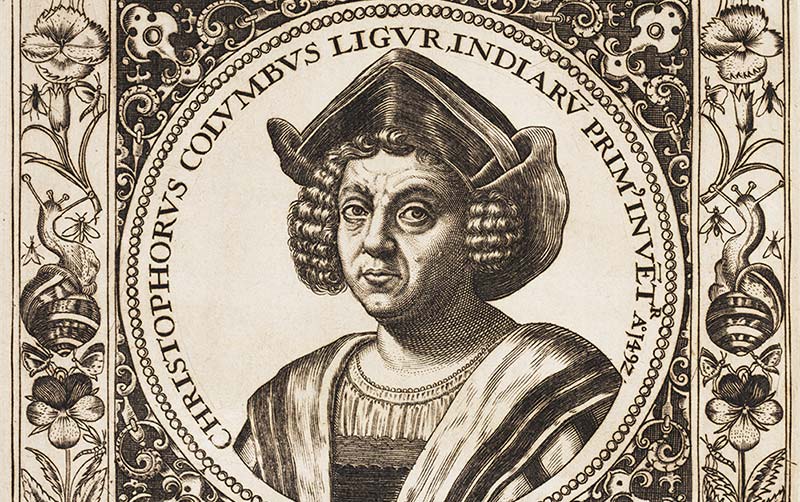
Christopher Columbus sails along the Atlantic coast of Panama searching for a waterway to the Pacific.
Image source: Boissard, Jean Jacques et al. Icones quinquaginta virorum illustrium.... Francofurtj: Theodor de Bry, vol. 1, 1597, p. 32.

Balboa crosses the Isthmus and sees the Pacific Ocean.
Image source: Balboa's First Sight of the Pacific Ocean. 1890. Photogravure. Library of Congress Prints and Photographs Division Collection.
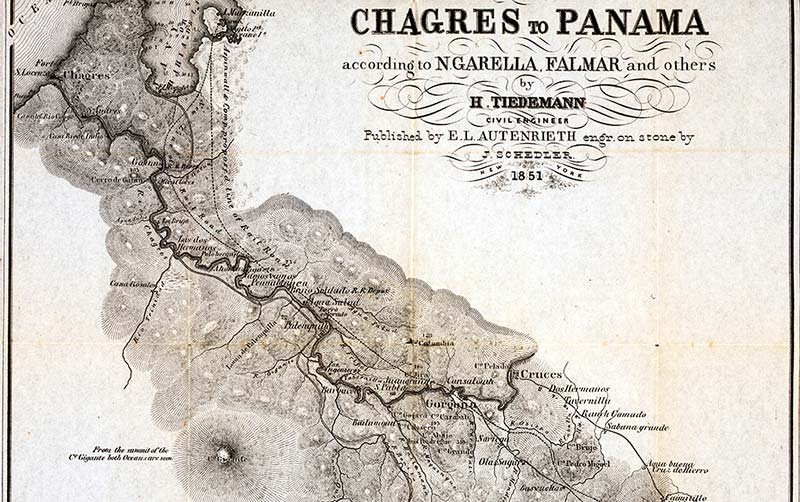
King Charles V orders a survey of the Chagres River to see if a canal can be built across the Isthmus.
Image source: Autenrieth, E. L. A Topographical Map of the Isthmus of Panama. New York: J.H. Colton, 1851, pl. 3.
Alexander von Humboldt’s Political Essay on the Kingdom of New Spain spurs interest in a canal across Central America.
Image source: Humboldt, Alexander von, and Elise C. Otté. Cosmos: Sketch of a Physical Description of the Universe. V.1, New York: Harper, 1859, frontispiece.
US President Andrew Jackson orders a U.S. Army team to study the feasibility of a canal across the Isthmus of Panama. They conclude it would be nearly impossible.
Image source: Andrew Jackson. c1896. Chromolithograph. Library of Congress Prints and Photographs Division Collection.

A.B. Nichols is born in Charlton, Massachusetts.
Image source: Nichols, Aurin Bugbee, and Tirzah Lamson Nichols. Panama Canal Collection, 1846-1923 (bulk 1906-1914). Vol. 24, Dec. 1908, p. C.
William Henry Aspinwall, John L. Stephens, and Henry Chauncy, New York businessmen, obtain the rights from New Grenada (present day Columbia, Panama, Venezuela, and Ecuador) to build the Panama Railroad across the Isthmus
Image source: Oran, "Tropical Journeyings." Panama Canal Collection, 1846-1923 (bulk 1906-1914), by Aurin Bugbee Nichols. Fol. XXX, sec. 3.
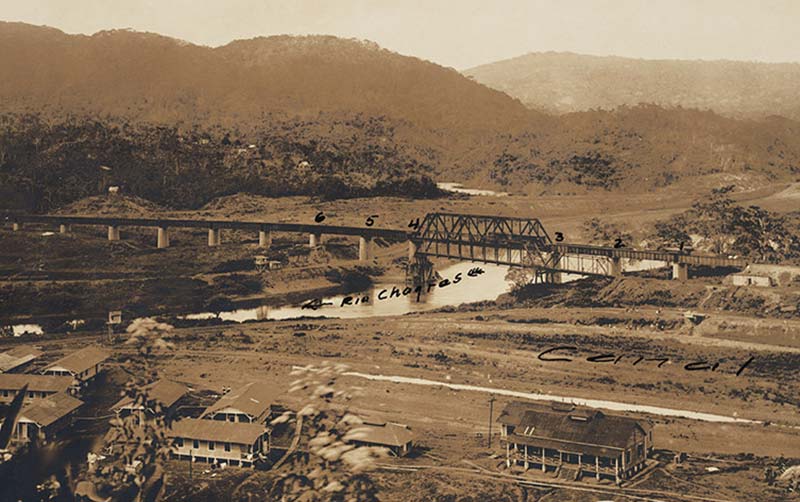
Construction begins on the Panama Railroad.
Image source: The New Gamboa Bridge. 1908. Panama Canal Collection 1846-1923 (Bulk 1906-1914) by Aurin Bugbee Nichols, vol. 19, p. 43.
The Panama Railroad opens for business on Sunday, January 28. The first train runs from the Atlantic Ocean all the way across the Isthmus of Panama to the Pacific Ocean. The railroad makes a fortune by charging excessively high prices to travelers headed to the California gold rush.
Image source: Tomes, Robert. Panama in 1855: An account of the Panama rail-road, of the cities of Panama and Aspinwall, with sketches of life and character on the Isthmus. New York: Harper & brothers, 1855, p. 88.

Ferdinand de Lesseps finishes building the Suez Canal in Egypt.
Image source: Good, Frank Mason. Egypt - Suez Canal - Lake Timsah, from opp. the chalet. c. 1856. photographic print. Library of Congress Prints and Photographs Division.

In late December, Ferdinand de Lesseps visits Panama to formally initiate construction of a sea-level canal under the French Compagnie Universelle du Canal Interocéanique de Panama.
Image source: F. Delesseps. 1805. Panama Canal Collection 1846-1923 (bulk 1906-1914) by Aurin Bugbee Nichols, Photograph Album 1, p. [1].
In Havana, Cuba, Dr. Carlos Finlay identifies the mosquito as the carrier of yellow fever, but he is unable to prove his theory experimentally.
Image source: Gorgas, Marie Doughty and Burton Jesse Hendrick. William Crawford Gorgas: His Life and Work. Garden City, N.Y: Garden City Pub. Co., 1924, p. 128.
De Lesseps visits the canal for the second time to attempt to restore workers’ morale and investors’ confidence.
Image source: Nichols, Aurin Bugbee and Tirzah Lamson Nichols. Panama Canal Collection 1846-1923 (bulk 1906-1914). Photograph Album 1, p. 48.
Ferdinand de Lesseps, beset by financial problems and difficulty of the undertaking, abandons his canal project. Over 20,000 people died during the effort and over 800,000 investors were financially ruined.
Image source: Nichols, Aurin Bugbee and Tirzah Lamson Nichols. Panama Canal Collection 1846-1923 (bulk 1906-1914). Photograph Album 1, p. 12.
After negotiating a 10 year extension with Gran Colombia, the reformulated Compagnie Nouvelle du Canal de Panama issues stock.
Image source: Unbekannte Autoren und Grafiker. Share of the Compagnie Universelle du Canal Interocéanique de Panama. 1880. Wikimedia Commons.
The Spanish American War impresses upon Americans the need for a canal across Panama as they followed news reports of the battleship Oregon steaming to the rescue on its 67-day, 12,000-mile journey from San Francisco to the Battle of Santiago Bay in Cuba.
Image source: Rockett, Perley Fremont. The Battleship Oregon in Manila Harbor after her trip "around the Horn". 1899. Library of Congress Prints and Photographs Division.

President William McKinley forms the U.S. Isthmian Canal Commission and authorizes it to investigate possible canal routes across Panama and Nicaragua. A.B. Nichols leads a team of surveyors to Nicaragua.
Image source: William McKinley, head-and-shoulders portrait, facing right. C. 1900. Library of Congress Prints and Photographs Division.
U.S. Army doctor William Gorgas eradicates Yellow Fever from Cuba.
Image source: General William C. Gorgas. National Archives at College Park.

President Roosevelt appoints John Findlay Wallace to the position of Chief Engineer in charge of the Panama Canal project.
Image source: Nichols, Aurin Bugbee and Tirzah Lamson Nichols. Panama Canal Collection 1846-1923 (bulk 1906-1914). Vol. B-4, May 1909, p. 98.
The U.S. war ship, Nashville, arrives in Panama to provide support for the Panamanian revolution and Panama claims independence from Columbia two days later.
Image source: USS Nashville. Naval History and Heritage Command.

The U.S. government purchases what is left of the failed French canal construction company, including equipment and buildings, for $40,000,000.
Image source: Nichols, Aurin Bugbee and Tirzah Lamson Nichols. Panama Canal Collection 1846-1923 (bulk 1906-1914). Vol. A-1, Apr. 1909, p. 55.
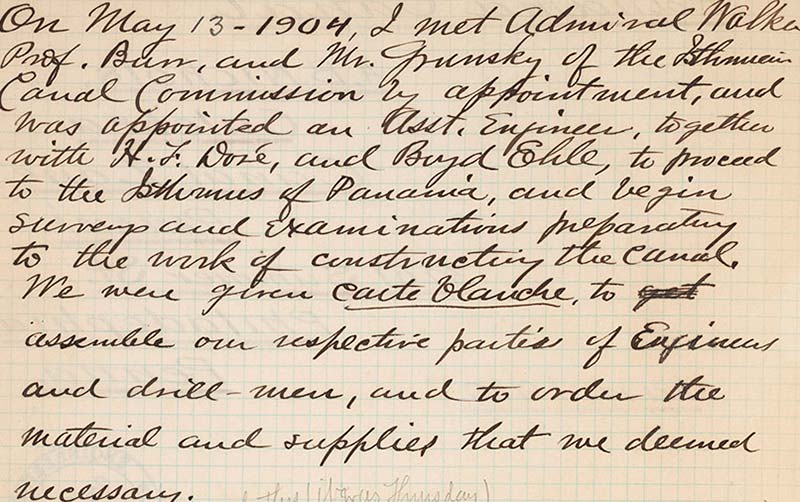
A.B. Nichols arrives in Panama on the SS Alianca, leading a party of 19 to survey the area of Gatún.
Image source: Nichols, Aurin Bugbee and Tirzah Lamson Nichols. Panama Canal Collection 1846-1923 (bulk 1906-1914). Vol. B-6, Pt. 1, Jan. 1910, p. 2.
Chief Engineer John Findlay Wallace arrives in Panama to begin the project. Chief Medical Officer Colonel William C. Gorgas also arrives in Panama to focus on sanitary conditions and eradicating the threat of yellow fever.
Image source: Nichols, Aurin Bugbee and Tirzah Lamson Nichols. Panama Canal Collection 1846-1923 (bulk 1906-1914). Photograph Album 2, p. [108].

John Wallace resigns after only one year, overwhelmed by the harsh conditions, diseases, and logistical problems.
Image source: John Findley Wallace. 1902. Wikimedia Commons.
John F. Stevens arrives at the Canal, replacing Wallace as Chief Engineer. Stevens all but stops excavation and rebuilds the railroad, builds infrastructure and housing, and improves living conditions.
Image source: Comissions - To Foreign Nations - Russian - Head of American Railroad Commission to Russian. John F. Stevens.... 1917. National Archives at College Park.

Colonel Gorgas’ efforts are successful and the last case of yellow fever is reported in Panama.
Image source: Nichols, Aurin Bugbee and Tirzah Lamson Nichols. Panama Canal Collection 1846-1923 (bulk 1906-1914). Vol. 48b, p. 65.
After John Stevens’ resignation, President Roosevelt appoints George Washington Goethals, US Major General and engineer, the new Chief Engineer. He remains in the position until the Canal is completed and becomes the first governor of the Canal Zone.
Image source: [George Washington Goethals, in uniform, three-quarter length portrait, seated, facing right]. C. 1919. Library of Congress Prints and Photographs Division.
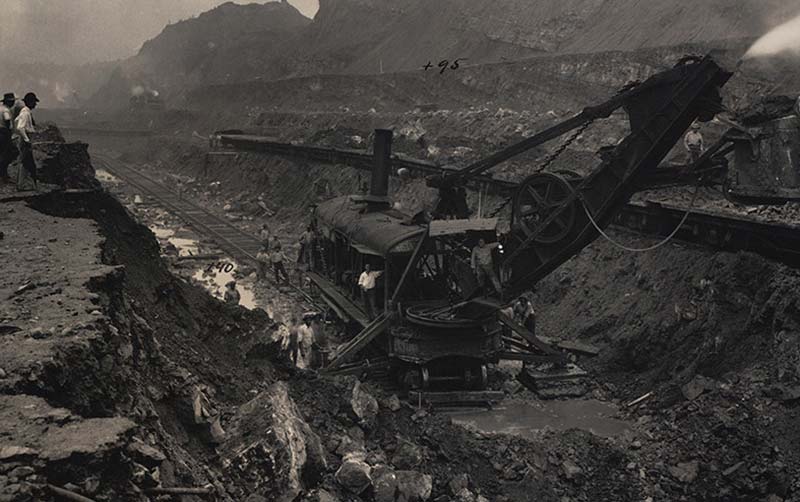
Construction begins on the Gatún Dam to control the Chagres River at the Atlantic entrance of the Canal. When completed, the dam creates the 164 square-mile Gatún Lake that provides a water source for lockages.
Image source: Nichols, Aurin Bugbee and Tirzah Lamson Nichols. Panama Canal Collection 1846-1923 (bulk 1906-1914). Vol. 48c, p. 39.
The Americans experience their first slide at Cucaracha when 500,000 cubic yards of dirt move into Culebra Cut.
Image source: Nichols, Aurin Bugbee and Tirzah Lamson Nichols. Panama Canal Collection 1846-1923 (bulk 1906-1914). Vol. 40, p. 84.
Lieutenant colonel David DuBose Gaillard is appointed engineer in charge of the Central Division, a 31.5 mile section of the Canal that includes the Culebra Cut, later named Gaillard Cut in his honor.
Image source: Bain News Service. Maj. D. Dub. Gaillard. July 1913. Library of Congress Prints and Photographs Division.
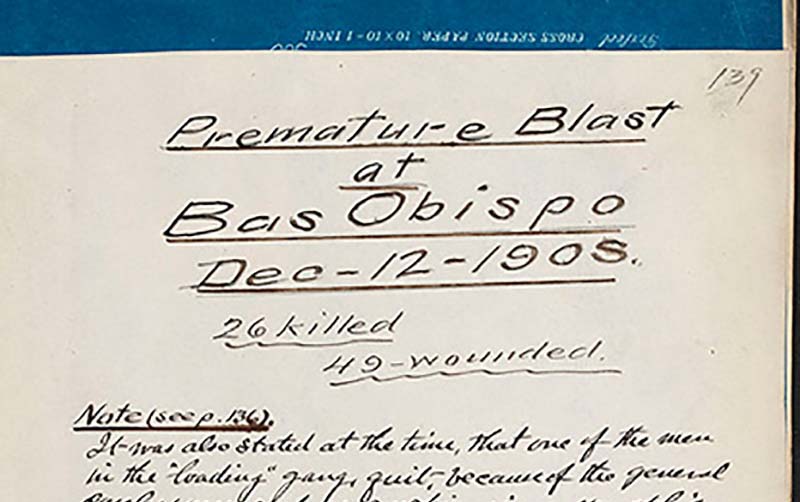
Forty-four thousand pounds of dynamite accidentally detonates in the Culebra Cut, killing 26 people and wounded 49 others.
Image source: Nichols, Aurin Bugbee and Tirzah Lamson Nichols. Panama Canal Collection 1846-1923 (bulk 1906-1914). Vol. 24, p. 139.
Construction begins on the Gatún locks at the Atlantic entrance to the Canal and at Pedro Miguel and Miraflores on the Pacific side.
Image source: Nichols, Aurin Bugbee and Tirzah Lamson Nichols. Panama Canal Collection 1846-1923 (bulk 1906-1914). Photograph Album 3, p. [28].

William Howard Taft, who had served as Theodore Roosevelt’s Secretary of War, takes the oath of office to become the twenty-seventh President of the United States.
Image source: [William Taft, head-and-shoulders portrait, facing left]. C. 1908. Library of Congress Prints and Photographs Division.
Landslides plague progress in Culebra Cut, dumping nearly 3 million cubic yards of material into the channel.
Image source: Nichols, A. B. Aurin Bugbee and Tirzah Lamson Nichols. Panama Canal Collection 1846-1923 (bulk 1906-1914). Photograph Album 3, p. [1].

The new Panama Canal Railroad opens for business after five years of work relocating the rail line.
Image source: Nichols, Aurin Bugbee and Tirzah Lamson Nichols. Panama Canal Collection 1846-1923 (bulk 1906-1914). Vol. 48, p. 70.

Engineers complete excavation work in the Culebra Cut, but landslides force workers to continue removing dirt for several more months.
Image source: Nichols, Aurin Bugbee and Tirzah Lamson Nichols. Panama Canal Collection 1846-1923 (bulk 1906-1914). Vol. 19, p. 63.

Workers close the spillway gates of the Gatún Dam, enabling Gatún Lake to fill to its operational height of 85 feet above sea level.
Image source: Nichols, Aurin Bugbee and Tirzah Lamson Nichols. Panama Canal Collection 1846-1923 (bulk 1906-1914). Photograph Album 2, p. [50].
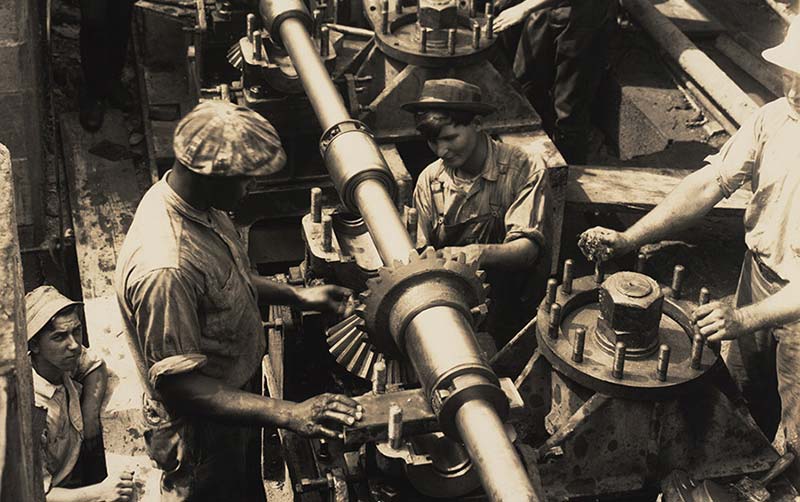
Work on the locks completed.
Image source: Nichols, Aurin Bugbee, and Tirzah Lamson Nichols. Panama Canal Collection 1846-1923 (bulk 1906-1914). Vol. 48d, p. 3.
A French crane boat Alexandre La Valley makes the first transit through the Panama Canal seven months before the official opening.
Image source: Nichols, Aurin Bugbee, and Tirzah Lamson Nichols. Panama Canal Collection 1846-1923 (bulk 1906-1914). Vol. 48e, p. 53.
World War I begins in Europe, overshadowing news of the Canal’s impending opening.
Image source: Nichols, A. B. Aurin Bugbee, and Tirzah Lamson Nichols. Panama Canal Collection 1846-1923 (bulk 1906-1914). Vol. 48a, p. 57.
The Panama Canal officially opens. The SS Ancon makes a ceremonial transit from the Atlantic end to the Pacific in nine hours.
Image source: Nichols, Aurin Bugbee, and Tirzah Lamson Nichols. Panama Canal Collection 1846-1923 (bulk 1906-1914). Photograph Album 3, p. [105].

Engineers complete work on the Madden Dam to control the Canal’s watershed. Located east of the Canal Zone, the resulting reservoir regulates the flow of the Chagres River into Gatún Lake.
Image source: Nichols, Aurin Bugbee, and Tirzah Lamson Nichols. Panama Canal Collection 1846-1923 (bulk 1906-1914). Vol. 48d, p. 66.

U.S. Congress approves funding for a $277 million plan to build a third set of locks. Excavation work begins in 1940 at both the Atlantic and Pacific entrances to the Canal. Secretary of War Henry Stimson terminates the project in May 1942 as funding shifts to other war-related priorities.
Image source: Canal Zone Government. Third Locks Project. Executive Agency Publications, 1941, p. 6, plate. 2.
Panamanian demonstrators, frustrated with U.S. presence in the Canal Zone, clash with American troops, sparking three days of violence along the Canal Zone. President Lyndon Johnson agrees to renegotiate a new canal treaty, although the effort ultimately fails.
Image source: Photograph of Students holding a Panamanian Flag. Jan. 1964. National Archives at College Park.
President Jimmy Carter and General Omar Torrijos sign two treaties that will require the U.S. to relinquish ownership of the Canal to Panama at noon on December 31, 1999, but give the U.S. the right to use military force to defend the neutrality of the Canal.
Image source: Jimmy Carter and General Omar Torrijos shake hands after signing the Panama Canal Treaty. Sep. 1977. White House Staff Photographers Collection, Jimmy Carter Library.

In March and April, the U.S. Senate ratifies the Carter-Torrijos treaties with votes of 68-32 for each treaty.
Image source: Parliamentarian Floyd Riddick, Senator Howard Baker, and Senator Robert Byrd. U.S. Senate Historical Office.
U.S. transfers the Panama Railroad to Panama as part of the Carter-Trujillo agreement ending American ownership of the Panama Canal.
Image source: Image courtesy of Kansas City Southern Railway.
The government of Panama grants Kansas City Southern Railway and Mi-Jack Products a 50-year concession to rebuild and operate the Panama Railroad.
Image source: Image courtesy of Kansas City Southern Railway.
At a ceremony attended by President Carter, the U.S. hands over control of the Panama Canal.
Image source: Matheney, Angus Grover. Presidents Mireya Moscoso and Jimmy Carter with Other Dignitaries at Miraflores Lock. 1999. Panama Canal Museum Collection at the University of Florida.
The revitalized Panama Railroad begins passenger and container services, complementing the existing hub transportation infrastructure provided by the Canal, the Colón Free Trade Zone, the Port terminals, highways, and airports.
Image source: Image courtesy of Panama Canal Railway.
The Panama Canal Authority begins construction of a $5 billion expansion project to add a third set of locks and to deepen the Canal’s channel.
Image source: Image courtesy of the Panama Canal Authority.

